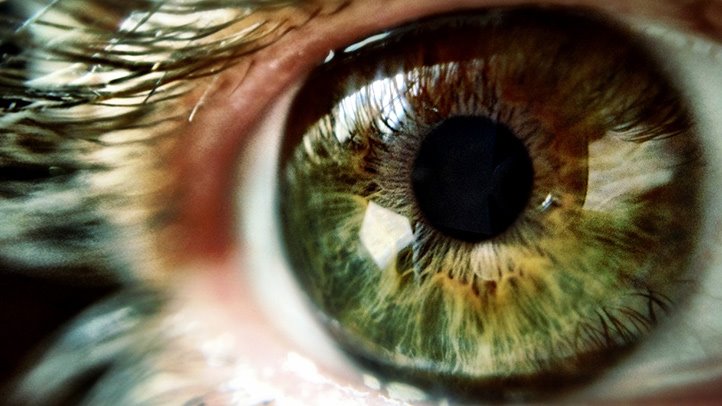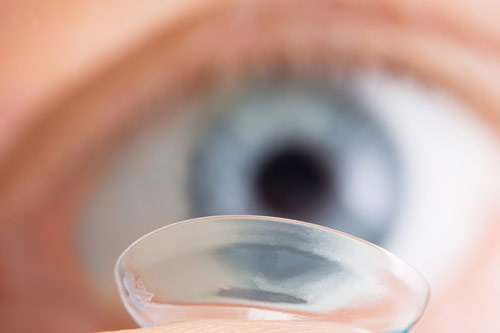If you thought smoking was causing damage to only your lungs, thing again. Your eyesight, one of your most valuable possessions, is at high risk of damage because of your bad habit.
The damage done to your eyes by cigarettes happens from two sources; the toxic smoke that hangs in the air which surrounds you as you puff on the cigarettes and 4000 odd toxic substances that enter your bloodstream once you smoke. In extreme cases, smoking also causes loss in vision. Here is a list of eye disorders and diseases, which can be caused due to smoking-
Macular degeneration
The risk of developing Age-related Macular Degeneration is there for people above the age of fifty. In case of smokers, the chance of developing AMD is three times more than in nonsmokers. It has been proven that smokers develop the chance of AMD ten years prior to non smokers.
Cataract
This process involves the clouding of the lens inside the eye. Cataract develops with old age, usually. The risk of developing early cataract is common among smokers, who are twice at risk of cataract than non smokers. The effect of the cataract in the case of smokers is more severe.
Glaucoma
Glaucoma is the eye disorder where the death of nerve fiber layer behind our eyes takes place, and that results in loss of vision. The increase in pressure within the eyes leads to glaucoma. Smoking enhances the pressure in your eyes, and so smokers are at a potential risk of acquiring this disease.
Diabetic eye diseases
A number of eye diseases are accompanied with diabetes. This can result in blindness when left ignored or not paid attention to in severe cases. Diabetic patients who are smokers are three times more at a risk of eye diseases associated with diabetes.
Optic neuropathy
This eye disease causes sudden loss of vision to the eyes without any pain. It happens due to the disrupted flow of blood in the arteries of the eyes. Smokers are 16 times more at a risk of developing optic neuropathy at an earlier age.
Thyroid associated eye diseases
Patients having thyroid issues or Grave's disease have disorders in their vision. Grave's disease patients who smoke tobacco are likely to develop severe eye diseases associated with the thyroid.
Dry eye
Smoking causes irritation to the eyes and affects the tear film of the eye. Smokers and passive smokers are likely to develop dry eye disorders. Smoking causes a lot of eye diseases and disorders, and smokers are at a higher risk of acquiring eye diseases than non smokers.

Headaches are common among working people as accumulated stress results in headaches and tiredness. Among the many different causes, strain on the eyes is one of the leading reasons for that annoying headache.
Taking an eye exam is recommended in case you are having headaches. The issues may not always be related to the eyes, but still a thorough eye check up is recommended. Strain in the eye is caused when small muscles present in the eye have to put in more effort than usual. Symptoms include aching, tired eyes with blurred vision and accompanying headaches. Such headaches are caused because of the following reasons:
Astigmatism
The cornea is in abnormal shape and causes people to squint when they want to focus, and this leads to bad headaches.
Hyperopia
This disorder is also called farsightedness. In case of this disorder, the images are focused by the eye behind the retina, and causes blurred vision and strain upon the eyes. Headaches occur as a result.
Presbyopia
This kind of problem occurs when the lens hardens and becomes inflexible with old age. This makes it hard for a person to focus and causes sore eyes along with headaches.
All disorders or conditions of the eyes can be rectified with the use of prescribed spectacles and contact lenses. For people already having glasses, regular eye check up should be carried out. Your power may increase which you are unlikely to notice, so regular check ups are vital.
Other causes
Headaches related to eye strain and eye problem can also develop from other causes. They are:
1. Glaucoma, an eye disease also causes headaches. This disease is characterized by the development of a fluid in the eyes, which in turn causes the internal eye pressure to shoot up. This pressure fluctuation can lead to headaches in many cases of glaucoma.
2. Cataract affected people suffer from headaches as well. Cataracts develop in individuals due to ageing. The lens becomes cloudy, and the vision gets blurred and slowly diminishes. The eye has to give more effort resulting in eye strain and accompanying headaches.
Prevention
In case you are having headaches, and you are not being able to find out the reason behind it, you should have an eye check up. Eyes are very sensitive and added strain to them causes headaches. People who use computers for long hours are affected by headaches due to eye strain. The best prevention is to have an eye examination and switch to glasses or lenses if required.
Headaches are of various kinds and arise from different factors, but eye strain is known to cause a lot of headaches in people who do eye stress involving activities.
In today’s world, most of the work that you do, is on your computer. With an increasingly digitized world, computers can’t be replaced. Though they have made your work easier, they do come with certain disadvantages as well. The rays emitted by a computer screen can be harmful to your eyes, if exposed for an extended duration.
It is important that you take certain precautionary measures to protect your eyes:
1. Wash your eyes: Wash your eyes on a regular basis; it facilitates cooling and relaxation of the eyes. Make it a routine to wash your eyes at least 5 to 6 times in a day.
2. Get computer glasses: Use computer glasses to protect your eyes as they help to minimize the effect of radiation from the screen. If you work for long hours in front of the computer, then you should consider getting a pair of computer glasses.
3. The position of your screen: The screen should ideally be positioned at an arm’s length and the viewing angle of the monitor should be around 35 degrees. Make sure you position your chair accordingly, keeping these tips in mind.
4. Eye exercise: You should exercise your eyes to reduce the strain and relax your eyes. Follow the 20-20 rule wherein after working on your computer for 20 minutes, you redirect your gaze to an object that is around 20 feet away. This helps your eye muscles to relax and thus, improves your eye health.
5. Don’t work at a stretch: Take breaks in between your work sessions to reduce fatigue in your eyes. Constantly staring at a screen for an extended amount of time can cause problems in your eye. Take 2 minute breaks for every 30 minutes you spend working on your computer. This helps to reduce the strain on your eyes also helps to release tension in the muscles of the neck and back.
6. Blink more than usual: Blinking moistens your eyes and causes tear production which does not allow the eye to suffer from dryness. It also prevents eye irritation and helps in clearing out dirt from the eyes.
Most of us take our eyes for granted. It has been often noticed that an individual splurges on expensive sunglasses for looking smarter. But, when it comes to the health of eyes, he or she is either ignorant or simply reluctant to do anything. This tendency is bad for the health of your precious eyes.
Remember, how you use them to stare at the screens of your gadgets all day long. Take out some time from your busy schedule and take care of your eyes. They are precious and vulnerable too.
Follow the tips below to keep your eyesight intact till your dying day:
Eat right for a good vision: It is very important to provide the right and sufficient amounts of nutrients to your body for developing or maintaining a good eye sight.
Include nutrients such as omega-3 fatty acids, lutein, zinc, and vitamins C and E in your regular diet to boost your eyesight. Food items like green and leafy vegetables, salmon, tuna, and other oily fish, eggs, nuts, beans, and other non-meat protein sources, oranges and other citrus fruits or juices and oysters and pork are excellent for the eye. The intake of a balanced diet keeps you away from diabetes, which causes blindness.
Give up smoking: Cigarettes or other tobacco products are bad for your eyes. They make your eyes more vulnerable to diseases like cataracts, optic nerve damage, and macular degeneration.
Guard your eyes from sunlight: It has been found that long exposure to sunlight leads to damage of the eyeballs. This happens as the UV rays in sunlight have an adverse impact on our eyes. You must put on sunglasses when you are outdoors for a longer period. You must choose sunglasses which give you 90 to 100 percent protection against sunlight. UV rays can cause cataracts and macular degeneration.
Avoid the screen: It is advisable to not spend long hours sitting in front of the computer screen or TV. Take breaks while working on the computer. Also, remember blinking your eyes while staring at the screen to avoid drying up of the eyes. Blinking increases tear production, keeping the eyes moist and healthy.
Use safety devices: If you work with hazardous substances, it is advisable that you put on safety devices on your eyes for their protection.
Hydrate your eyes: In order to have a good vision, you must hydrate your eyes by splashing water on your eyes wide open at specific intervals in a day. When you wash your face after returning from outside, don't forget to wash your eyes as well. As you splash water on the eyes, the dust particles on the surface of the eyelid, gathered from outside, gets washed away.
Contact lenses are one of the most convenient ways to correct vision related problems. It is easily disposable and requires the least maintenance. It might have minor side effects in the form of irritations and allergies but it requires the least time for adaptability. They help to correct nearsightedness and farsightedness along with astigmatism and age-related vision problems like presbyopia. Following are the benefits and harms of wearing contact lenses.
Positive effects of contact lenses
1. Better vision - Wearing contact lenses improves your vision to a great amount, especially peripheral vision. They are comfortable to wear and can correct both nearsightedness and farsightedness. They can cause discomfort initially but are more effective than glasses. Lenses are also available in bifocals and tints and can be worn for long periods of time.
2. Great for an active lifestyle - Glasses can be a hindrance to sports activities and can limit your peripheral vision. Lenses, on the other hand, are great for an active lifestyle as they require short adaptation period. They are easy to put and take care of and do not require a lot of maintenance on your part as it needs least cleaning.
Risks of wearing contact lenses
1. Dry eyes - Dry eyes are the most common side effects of wearing contact lenses
2. Infections - Contact lenses wearers are prone to infection of the cornea called keratitis. It can cause swelling, blurry vision and other problems due to lack of oxygen supply to the cornea. Infection can be prevented by maintaining the hygiene while wearing and taking off lenses.
3. Allergic reactions - Allergic reaction to the contact lens solution can affect your vision as it causes inflammation of the eyeballs and redness. It can also cause eyelid inflammation and limit your scope of vision.












